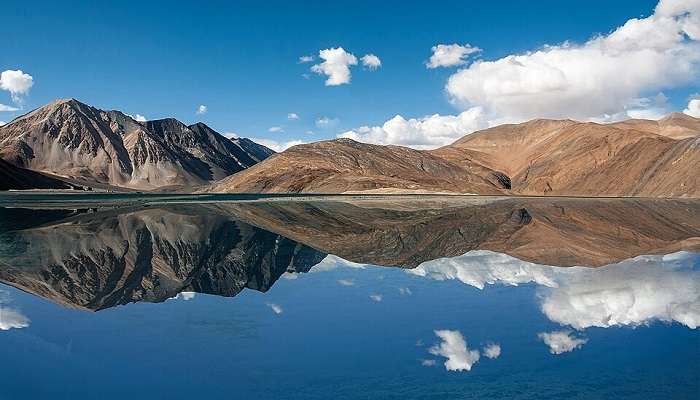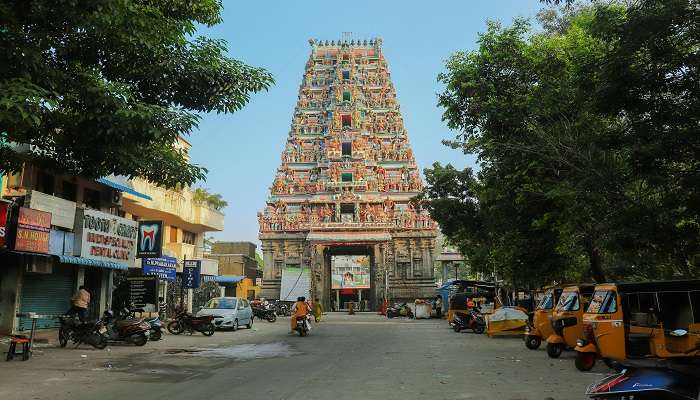An All-In-One Guide To Delhi’s Jantar Mantar For First-Time Visitors In 2025!
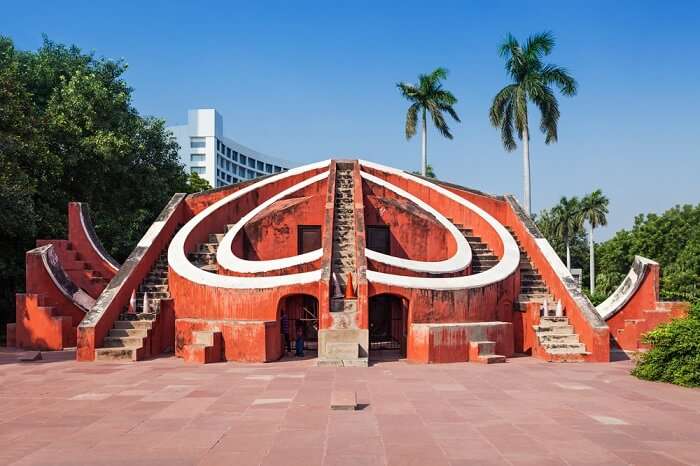
The Jantar Mantar in Delhi is an outstanding example of the coming together of the universe, society, and beliefs. You’ll be left hypnotized by the impressive set of monumental instruments that it houses. Designed for the observation of astronomical positions with the naked eye, it embodies several architectural innovations. The structure in Delhi is known to be one of the most well-preserved observatories in the entire country. It is an expression of the astronomical skills and cosmological concepts of the court of a scholarly prince.
Quick Links
About Jantar Mantar

The word Jantar/Jantra is derived from the Hindi word yantra, which means an instrument, while the suffix Mantar is derived from the Hindi word mantrana, meaning consult or calculate. The primary purpose of Jantar Mantar was to compile astronomical tables and to predict the times and movements of the sun, moon and planets. Some of the most distinct instruments that the complex houses are the Ram Yantra, Samrat Yantra, Jayaprakash Yantra and the Mishra Yantras.
Jantar Mantar Ticket Price: INR 15/- for Indian nationals, INR 200/- for tourists
Photography Charges: Free (video shoot at INR 25/-)
Jantar Mantar Timings: 10 AM – 6 PM
Famous For: Walking tours, photography, sightseeing, picnicking
Visit Duration: 1-2 hours
Must Read: 22 Super Awesome Places To Visit Near Delhi In Monsoon
Best Time To Visit Jantar Mantar
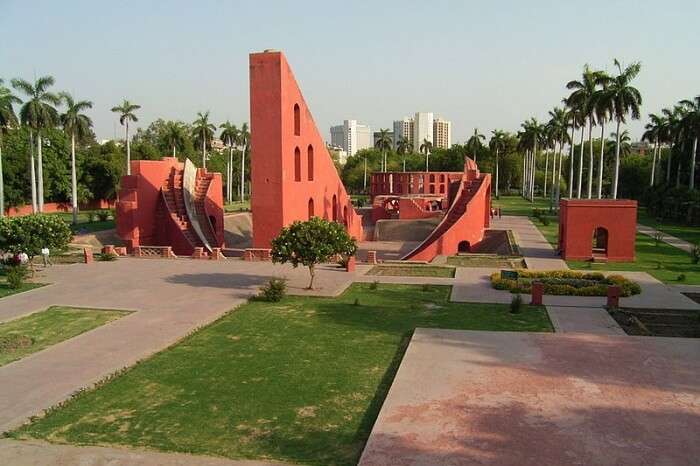
The best time to visit Jantar Mantar in Delhi is during the cool, dry season. You can choose to go sightseeing anytime between November and March. During this period, the weather remains pleasant. The temperature of Delhi ranges from 20 to 25 degrees in October. In November, the temperature falls from 15 to 20 degrees. We suggest you wear light clothes along with sunglasses and a hat.
Suggested Read: A Boat Ride From Delhi To Taj Mahal Is On The Cards & We Can’t Keep Calm!
10 Facts About Jantar Mantar In Delhi
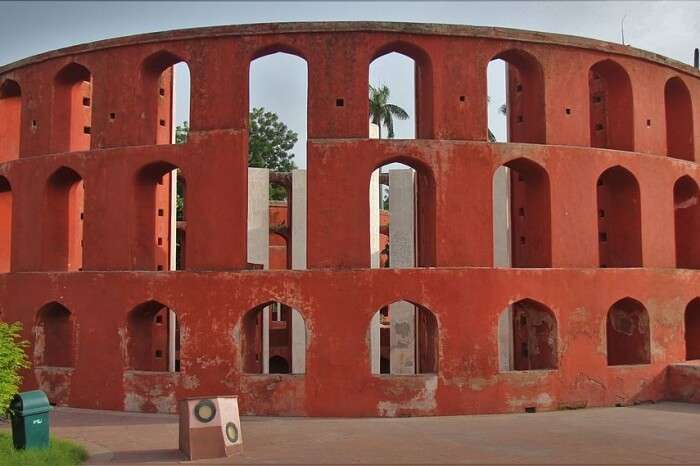
Jantar Mantar provides a brilliant testimony of the culmination of the scientific and technical conceptions of the great observatory devised in the Medieval world. Read on to learn fun historical facts and trivia about this marvel:
- Although a total of five Jantar Mantars were built by Sawai Jai Singh II between 1717-1737, only four remain.
- The sundial measures the time of a day, correct to half a second.
- There is a plaque fixed on one of the structures that mistakenly dates the construction of the observatory to 1710. Later research suggests 1724 as the actual year of construction.
- The sculptural structures of this observatory have inspired several contemporary art pieces.
- It is a UNESCO World Heritage Site.
- The words Jantar means instrument and Mantar means calculation. The meaning of these words together refers to a calculating instrument.
- This iconic spot is one of the famous five observatories that were set up by Maharaja Sawai Jai Singh.
- You can find 14 architectural astronomical instruments at this observatory.
- If you want to know more about this observatory then you can check out the audio guides available here.
- Jantar Mantar houses one of the world’s biggest stone sundial.
Suggested Read: 19 Extraordinary Destinations Around Delhi That You Ought To Check Out
Places To Visit Near Jantar Mantar
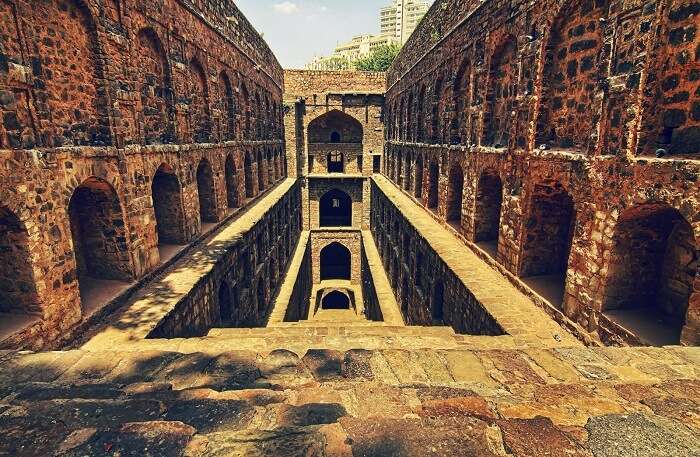
You can drop by Agrasen Ki Baoli (pictured above), which is only 1.4 km away from the complex. This baoli, with 108 steps, is truly one of its kind in Delhi. The site has been used to shoot scenes for various Bollywood films such as PK starring Aamir Khan and Sultan starring Salman Khan. You can also visit the India Gate, which is a famous war memorial. If you want to shop from local and international brands, head to Connaught Place. If you’re feeling hungry from all the walking, eat delicious langar at Bangla Sahib Gurudwara.
Suggested Read: 20 Historical Places In Delhi To Explore For A Walk Through Time
Traveler Tips
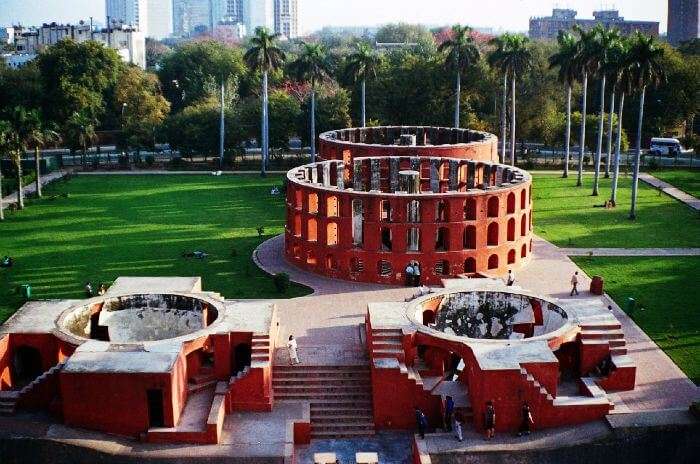
This stunning observatory attracts travelers from around the world who are curious about the significance of astrology and the use of various tools and methods applied in the ancient era. Here are a few tips and pointers you should keep in mind if you plan to visit the complex:
- Most of the instruments depend on sunlight, so to understand how they work, make sure you visit on a sunny day.
- Paying for a local guide is highly recommended if you wish to learn how each fascinating instrument works.
- Don’t forget to carry a water bottle to keep yourself hydrated.
Suggested Read: 30 Reasons I Would Rather Be In Delhi Than Anywhere Else
How To Reach
Jantar Mantar is located in Connaught Place, which is a common landmark in Delhi. There are various means to get to this complex. We have listed a few below. You may choose any one of them according to your convenience:
Via Metro: The nearest metro stations are Rajiv Chowk and Patel Chowk. You can get down at Rajiv Chowk metro station (Gate 6) and hire an auto to reach the complex. It is 2 km away from the station. If you choose to get down at Patel Chowk, the observatory is situated within walking distance.
Via Rail: The observatory is 2.5 km away from New Delhi railway station.
Via Bus: You can hire buses from any part of the city to Palika Kendra bus stand, which is very close to the entry gate of the observatory.
Further Read: Getting Married? These Are The 17 Best Locations For A Pre Wedding Shoot In Delhi & NCR
While the aesthetic presence of Jantar Mantar is something that cannot be taken away as long as the basic structure is intact, its utility for the visitor cannot be achieved until all the markings on the instruments are restored correctly and there is a continuous presence of astronomy educators, students and amateur astronomers in the observatory. Make sure to stop by this architectural marvel on your trip to Delhi to make your visit memorable!
Disclaimer: TravelTriangle claims no credit for images featured on our blog site unless otherwise noted. All visual content is copyrighted to its respectful owners. We try to link back to original sources whenever possible. If you own rights to any of the images and do not wish them to appear on TravelTriangle, please contact us and they will be promptly removed. We believe in providing proper attribution to the original author, artist or photographer.
Frequently Asked Questions About Jantar Mantar
What is the Speciality of Jantar Mantar?
Jantar Mantar is an observatory constructed by Maharaja Jai Singh of Jaipur in 1724. The essential purpose of this observatory was to accumulate astronomical tables which in turn would help predict the time and movement of the celestial bodies such as the sun, moon and other planets.
How many Jantar Mantar are there?
In the early 18th century, Maharaja Jai Singh II of Jaipur constructed five Jantar Mantar in total, in New Delhi, Jaipur, Ujjain, Mathura, and Varanasi; they were completed between 1724 and 1735.
Is Jantar Mantar Delhi a World Heritage Site?
It is a world heritage site since 2010. There are total 5 jantar mantar in the whole India namely, Delhi, Jaipur, Ujjain, Mathura and Varanasi.
Why is Jantar Mantar called Jantar Mantar?
The primary purpose of the observatory was to compile astronomical tables, and to predict the times and movements of the sun, moon and planets. Some of these purposes nowadays would be classified as astronomy. Completed in 1724, the Delhi Jantar Mantar had decayed considerably by 1867.
How is the sundial at Jantar Mantar used for measuring time?
The samrat yantra, for instance, which is a sundial, can be used to tell the time to an accuracy of about two seconds in Jaipur local time. The GiantSundial, known as the Samrat Yantra (The Supreme Instrument) is one of the world’s largest sundials, standing 27 metres tall.
Is Jantar Mantar a monument?
The Jantar Mantar is a collection of nineteen architectural astronomical instruments built by the Rajput king Sawai Jai Singh II, the founder of Jaipur, Rajasthan. The monument was completed in 1734. It features the world’s largest stone sundial, and is a UNESCO World Heritage site.
What is the architectural style of Jantar Mantar?
Jantar Mantar is an array of Indian astronomical instruments. It consists of 13 architectural astronomy instruments. The observatory is made up of geometric devices in the form of what appears to be modern architecture. These are for measuring time, predicting eclipses, tracking stars.
Who built Jantar Mantar?
In the early 18th century Maharaja Sawai Jai Singh II of Jaipur constructed five Jantar Mantar in total in New Delhi, Jaipur, Ujjain, Mathura and Varanasi.
People Also Read
Jantar Mantar Jaipur Historical Places In Delhi Taj Mahal



